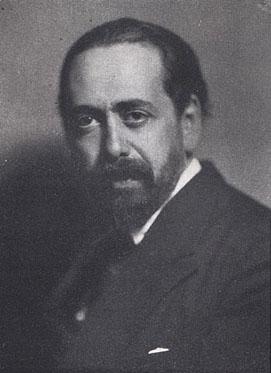Oliverio Girondo facts for kids
Quick facts for kids
Oliverio Girondo
|
|
|---|---|

Oliverio Girondo
|
|
| Born | August 17, 1891 Buenos Aires, |
| Died | January 24, 1967 (aged 75) Buenos Aires, |
| Occupation | Poet |
| Literary movement | Neo-Surrealism |
| Spouse | Norah Lange |
Oliverio Girondo (born August 17, 1891 – died January 24, 1967) was an important Argentine poet. He was born in Buenos Aires into a wealthy family. This allowed him to travel to Europe from a young age, where he studied in Paris and England.
He is well-known for being part of magazines like Proa, Prisma, and Martín Fierro. These magazines helped introduce a new style of writing called ultraism to Argentina. Ultraism was one of the first "vanguard" movements, which means it was a new and experimental way of creating art.
His first poems were full of bright colors and a bit of humor. Instead of just admiring nature, which was common then, he wrote about city life. He celebrated living in big, modern cities but also pointed out some of the strange habits of city society.
Contents
Oliverio Girondo: A Poet's Life and Friends
Oliverio Girondo lived at the same time as other famous writers like Jorge Luis Borges, Raúl González Tuñón, Macedonio Fernández, and Norah Lange. He married Norah Lange in 1943. He met her and other writers at a lunch in 1926.
Many of these writers were part of the "vanguard" art movement in Argentina. They often belonged to a group called the Florida group. There was a playful rivalry between the Florida group and another group called Grupo Boedo. Girondo was very excited about the ultraist movement. He influenced many younger poets, including Enrique Molina. Together, they translated a famous work by Arthur Rimbaud called "A Season in Hell."
Girondo also became good friends with other famous poets like Pablo Neruda and Federico García Lorca. They met in 1934 when both were in Buenos Aires. Around 1950, Girondo started painting in the surrealism style. However, he never showed or sold any of his paintings. He was buried in La Recoleta Cemetery in Buenos Aires.
Oliverio Girondo's Books
Oliverio Girondo wrote several unique books of poetry:
- Calcomanías (Stickers) (1925)
- Espantapájaros (Scarecrow) (1932)
- Interlunium (1937)
- Campo nuestro (Countryside of Ours) (1946)
His final book was called "In the Moremarrow" (originally In the masmédula). In this book, he tried to express himself in a completely new way. One critic, Enrique Molina, said that the words in this book sometimes blended together. They formed "superwords" with many meanings and functions. This unique style was based on how the words sounded and what they meant. Some people compare this experimental work to "Trilce" by the Peruvian author César Vallejo.
The English translation of In the Moremarrow was even nominated for the 2014 Best Translated Book Award.
Fun Facts About Oliverio Girondo
Oliverio Girondo's poems are a big part of The Dark Side of the Heart. This is a 1992 movie directed by Eliseo Subiela. In the film, a poet tries to find the love of his life, even while Death keeps getting in his way.
See also
 In Spanish: Oliverio Girondo para niños
In Spanish: Oliverio Girondo para niños

